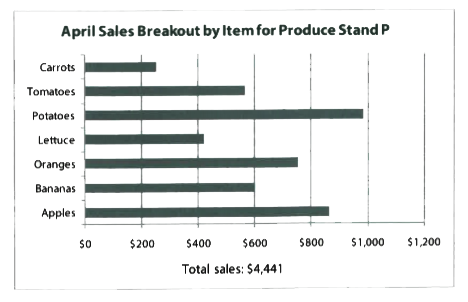Radish and carrot are
fusiform root and conical root respectively
conical root and fusiform root respectively
napiform root and palmate root respectively
nodulose root and tuberous root respectively
To answer the question "Radish and carrot are," we need to identify the types of roots these plants possess. Let's break down the solution step by step.
1. Identify the Root Type of Radish:
- Radish has a specific root structure known as a fusiform root. This type of root is characterized by being broad in the middle and tapering at both ends.
2. Identify the Root Type of Carrot:
- Carrot, on the other hand, has a conical root structure. A conical root is swollen at the top and gradually tapers towards the bottom, resembling the shape of a cone.
3. Analyze the Options:
- The options provided are:
- a) Fusiform root and conical root respectively
- b) Conical root and fusiform root respectively
- c) Nappy form root and palmate root respectively
- d) Nodulose root and tuberous root respectively
- From our identification, we can see that radish corresponds to fusiform root and carrot corresponds to conical root.
4. Select the Correct Answer:
- Based on the analysis, the correct answer is option a): Fusiform root (for radish) and conical root (for carrot).
Final Answer:
Radish and carrot are fusiform root and conical root respectively.
---
- Radish has a specific root structure known as a fusiform root. This type of root is characterized by being broad in the middle and tapering at both ends.
- Carrot, on the other hand, has a conical root structure. A conical root is swollen at the top and gradually tapers towards the bottom, resembling the shape of a cone.
- The options provided are:
- a) Fusiform root and conical root respectively
- b) Conical root and fusiform root respectively
- c) Nappy form root and palmate root respectively
- d) Nodulose root and tuberous root respectively
- From our identification, we can see that radish corresponds to fusiform root and carrot corresponds to conical root.
- Based on the analysis, the correct answer is option a): Fusiform root (for radish) and conical root (for carrot).
Radish and carrot are fusiform root and conical root respectively.
Topper's Solved these Questions
- MORPHOLOGY OF FLOWERINGPLANTS BOOK - VMC MODULES ENGLISHCHAPTER - MORPHOLOGY OF FLOWERINGPLANTS EXERCISE - EXAMPLE
40 Videos
- MORPHOLOGY OF FLOWERINGPLANTS BOOK - VMC MODULES ENGLISHCHAPTER - MORPHOLOGY OF FLOWERINGPLANTS EXERCISE - PRACTICE EXERCISE-(1)
5 Videos
- MORPHOLOGY OF FLOWERINGPLANTS BOOK - VMC MODULES ENGLISHCHAPTER - MORPHOLOGY OF FLOWERINGPLANTS EXERCISE - IMPECCABLE
55 Videos
- MINERAL NUTRITIONBOOK - VMC MODULES ENGLISHCHAPTER - MINERAL NUTRITIONEXERCISE - IMPECCABLE
55 Videos
- ORGANISMS & POPULATIONS BOOK - VMC MODULES ENGLISHCHAPTER - ORGANISMS & POPULATIONS EXERCISE - In - Chapter exercise C
10 Videos
Similar Questions
Radish has
View SolutionRead the following statement and find out INCORRECT statement .
(a) Both a short day plant and a long day plant can flower simultaneously in a given place .
(b) Sugar beet cabbage and carrot are common biennials .
(c) Some important food plants, wheat, barley , and rye have three kinds of varieties : winter, summer, and spring varieties
(d) Many of the extrinsic factors such as temperature and light , control plants growth and development.
View Solution
Knowledge Check

Which of the following ratios is closest to the ratio carrot sales to potato sales at Produce Stand P in the month of April?A1:4B2:9C1:5D1:6
Write each sentence in the " If ................ Then " form.
Roses are vegetables if carrots are flowers.
View SolutionA basket of vegetables contsins carrot, pototo, radish and tomato. Which of them represent the correct homologous structures?
View SolutionEffect of vernalisation can not be seen in sugarbeet, cabbages and carrots.
View SolutionRadish has
(a) Stem and epicotyl
(b) Primary root and hypocotyl
(c) Primary root and epicotyl
(d) Secondary not and primary root.
View SolutionWhich one of the following is a pair of endangered species?
(a) Hornbill and Indian Aconite
(b) Indian peacock and Carrot Grass
(c) Garden Lizard and Mexican Poppy
(d) Rhesus Monkey and Sal Tree.
View SolutionPut a tick mark (True) against the correct alternative in the following statements:
(j) Which one of the following vitamin deficiency diseases can be
cured by eating a diet which includes carrot, yellow fruits, vegetables, butter, milk, fish?
View SolutionMany plants among Indigofera, Sesbania, Salvia, Allium, Aloe, mustard, groundant,radish,gram and turnip have stamens with different length in their flowers
View Solution
